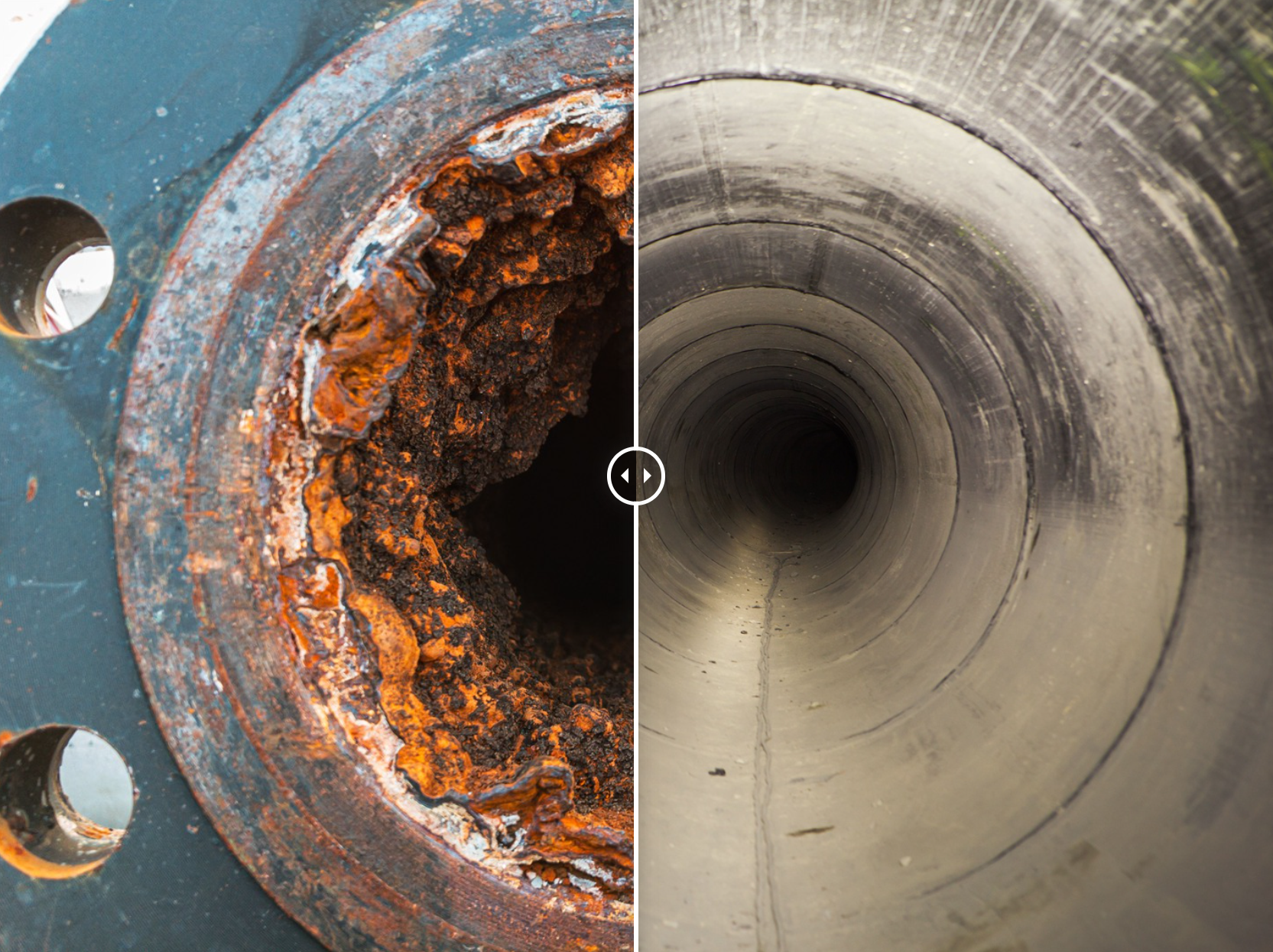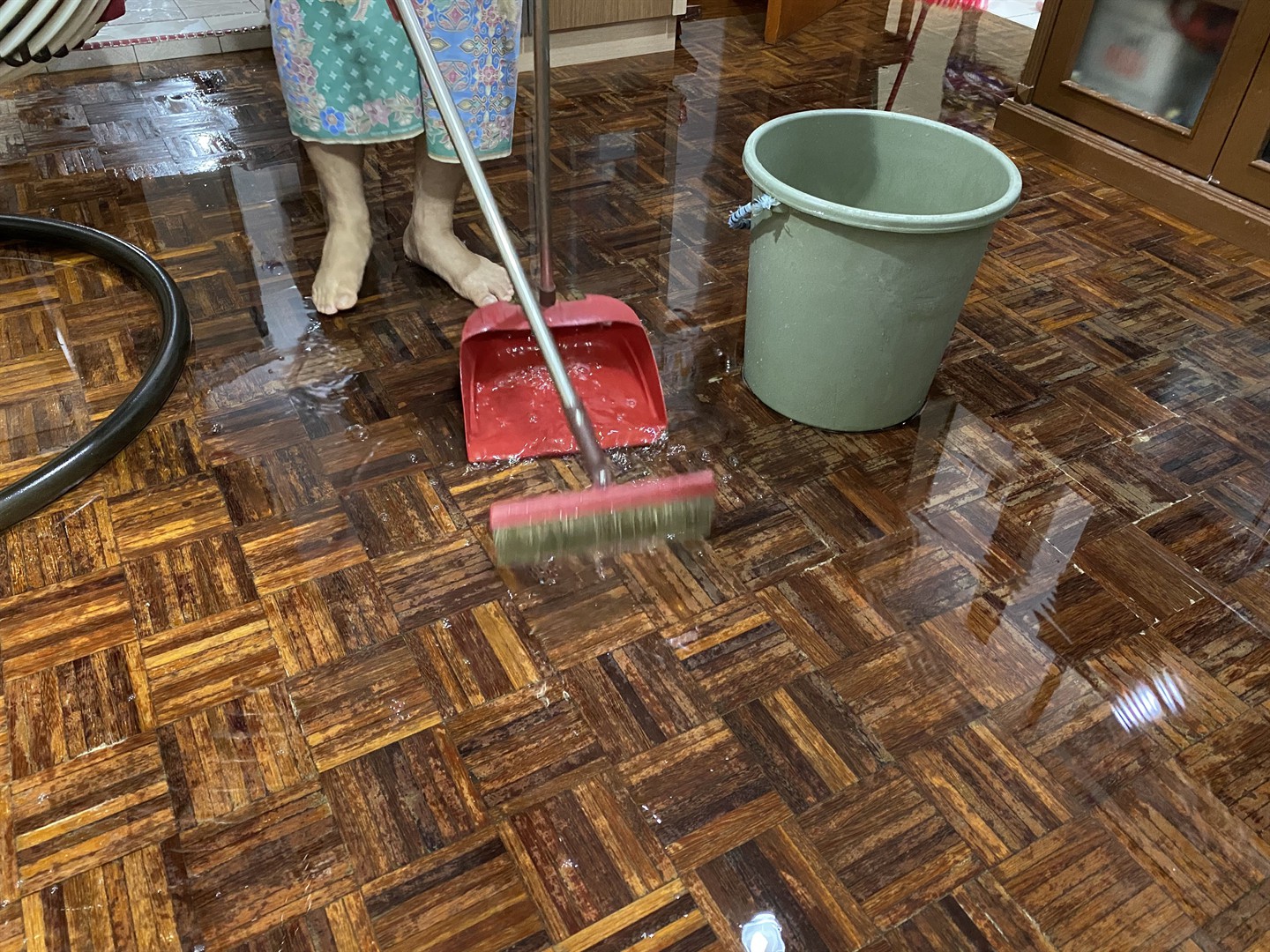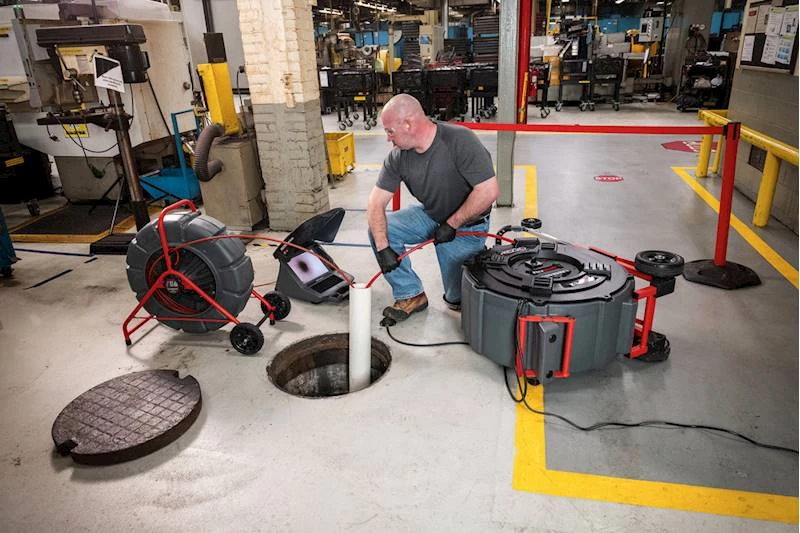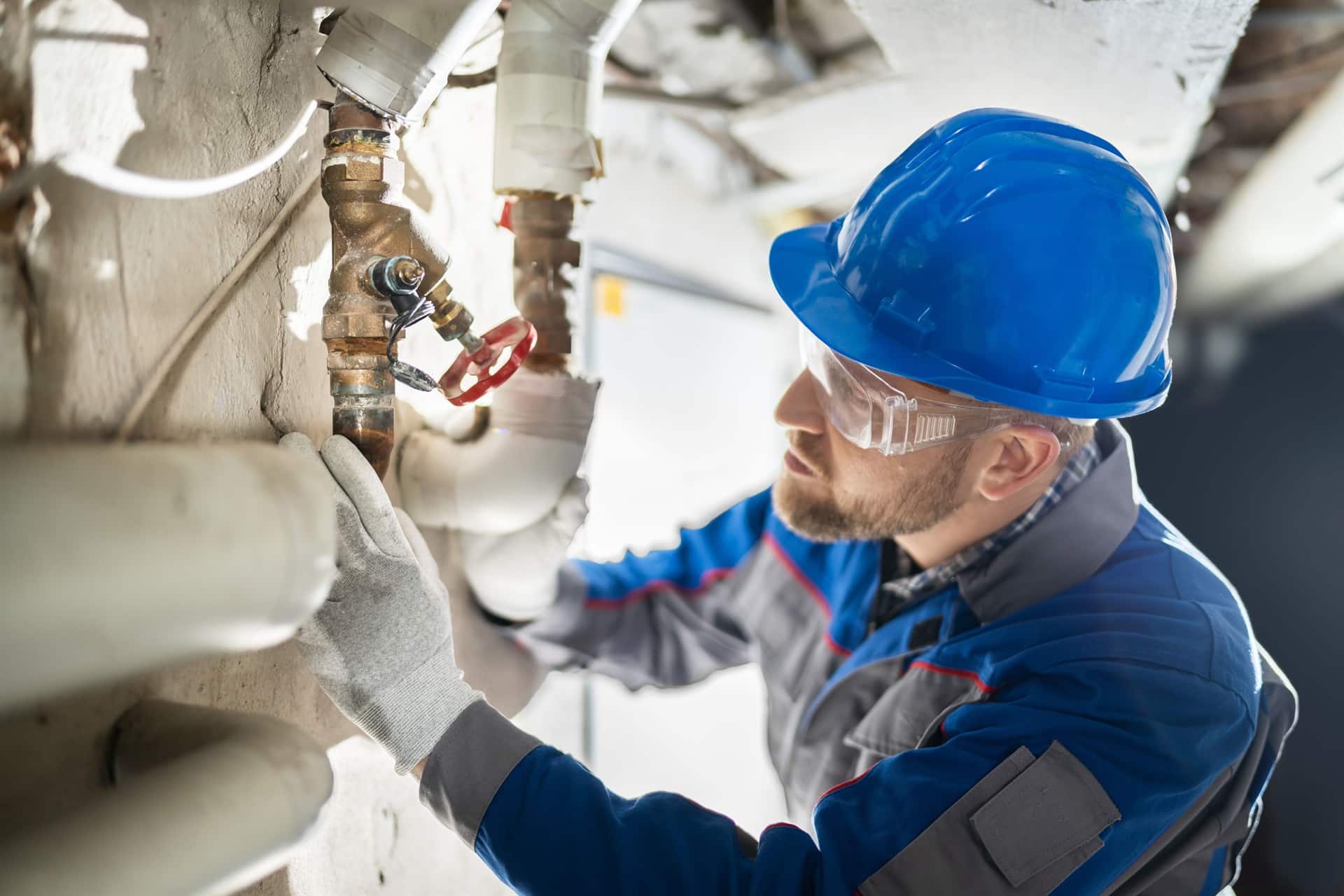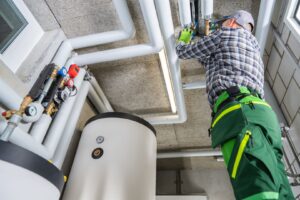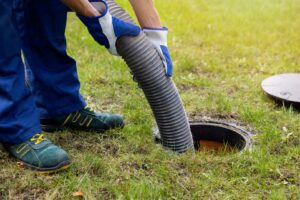As the vibrant colors of autumn foliage adorn our surroundings and the temperature gradually drops, homeowners must prepare for a seasonal shift in their maintenance responsibilities. While many may think of fall as a time for cozy sweaters and pumpkin-spiced everything, it is also a critical period to address common plumbing issues that can arise during this transitional season.
If you are ready to embrace fall with peace of mind and a well-maintained plumbing system, let’s dive into the essential strategies to combat common fall plumbing issues. Remember, a proactive approach can save you time, money, and the hassle of dealing with unexpected plumbing problems.
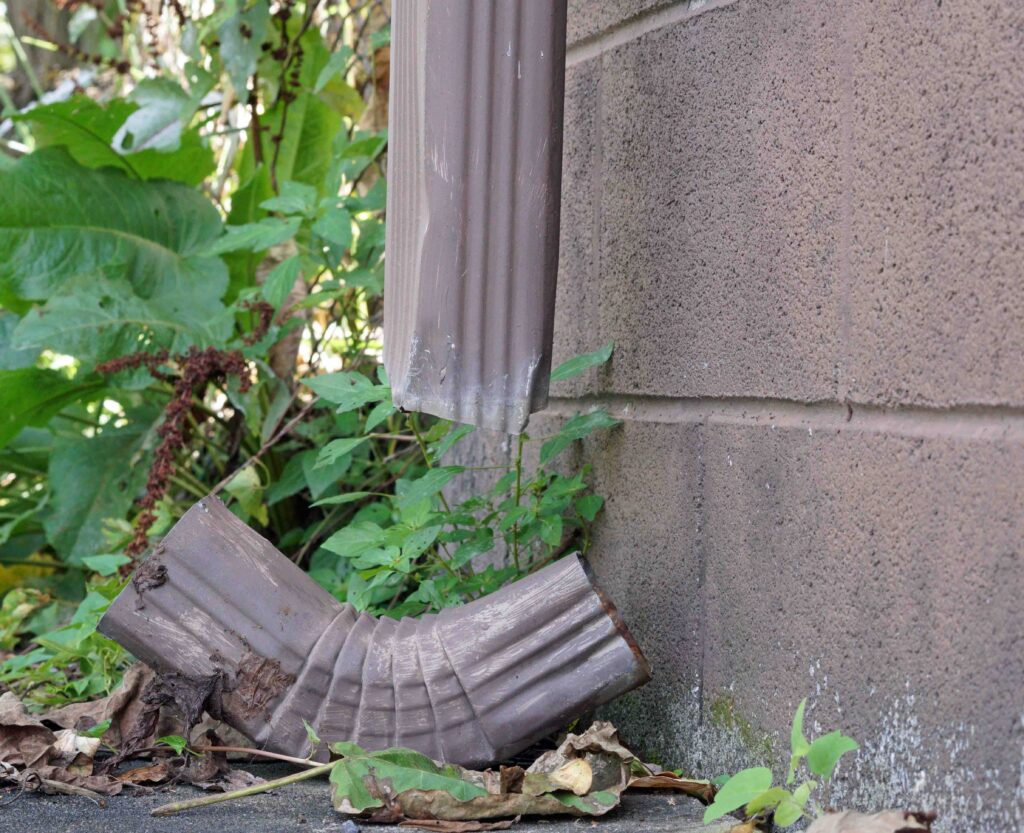
1. Clogged Gutters and Downspouts
The beauty of fall foliage also brings with it a hidden menace for homeowners: clogged gutters and downspouts. As leaves and debris rain down from the trees, they can accumulate in your gutters, blocking the flow of rainwater. This seemingly minor issue can quickly escalate into a major problem, potentially causing water damage to your home’s foundation, walls, and roof.
To prevent clogged gutters and downspouts, regular maintenance is key. Here’s how to tackle this issue effectively:
1.1. Cleaning Gutters:
The most straightforward solution is to clean your gutters regularly, ideally before fall arrives. Use a ladder and appropriate safety gear to remove leaves, twigs, and debris. Ensure that your downspouts are clear as well.
1.2. Gutter Guards:
Consider installing gutter guards, which are designed to prevent leaves and debris from entering the gutters while allowing water to flow through. This can significantly reduce the need for frequent cleaning.
1.3. Professional Assistance:
If your gutters are high or difficult to access, or if you simply prefer to leave this task to the experts, hire professional septic tank services or plumbing services to perform regular gutter cleaning.
By addressing clogged gutters and downspouts, you not only protect your home from potential water damage but also maintain the overall health of your plumbing system. Neglecting this simple maintenance task can lead to costly repairs down the road, making it a crucial part of fall plumbing care.
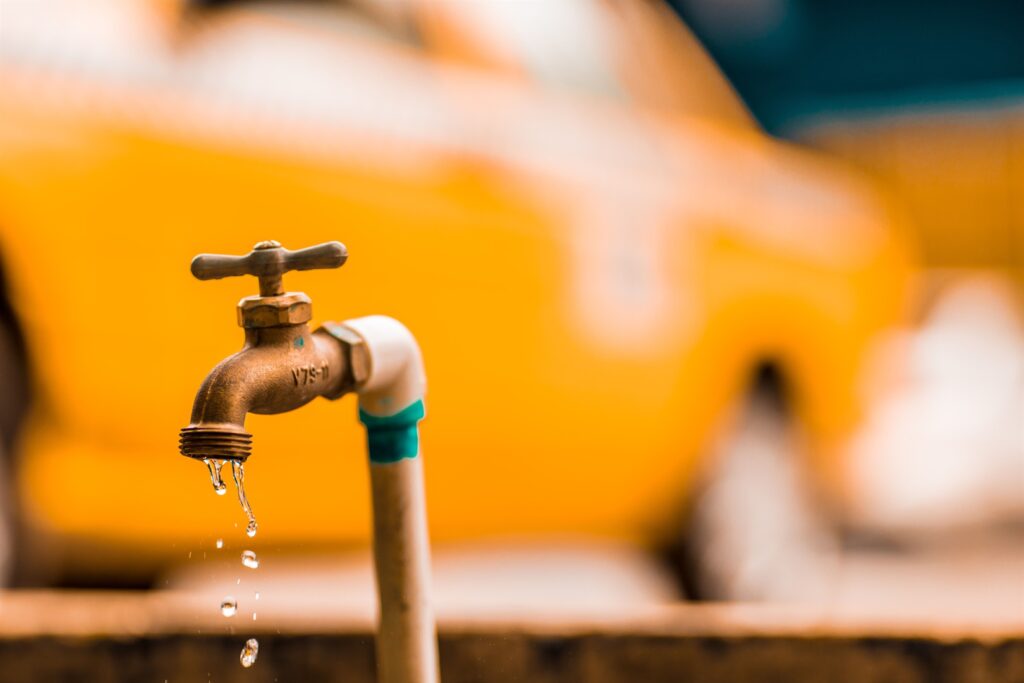
2. Outdoor Faucet Maintenance
As the temperatures begin to drop during the fall season, one common plumbing issue that homeowners face is frozen outdoor faucets. Neglecting to properly prepare these fixtures for colder weather can lead to costly repairs. Here’s how to perform outdoor faucet maintenance and prevent freezing and bursting.
2.1. Disconnect Garden Hoses:
Start by disconnecting all garden hoses from outdoor faucets. Leaving hoses attached can trap water, leading to freezing and potential faucet damage.
2.2. Drain Faucets:
Open the outdoor faucets to allow any remaining water to drain out. This step is crucial in preventing freezing. Be sure to leave the faucets in the fully open position.
2.3. Install Faucet Covers:
Faucet covers, also known as faucet insulators, are inexpensive and readily available at hardware stores. These covers insulate the faucet, protecting it from cold temperatures. Secure them tightly over each outdoor faucet.
2.4. Check for Leaks:
Before winter sets in, check for any leaks around the outdoor faucets. Even minor leaks can cause water to accumulate around the faucet, increasing the risk of freezing.
2.5. Consider Frost-Proof Faucets:
If you are in an area with particularly harsh winters, consider installing frost-proof outdoor faucets. These are designed to prevent freezing by placing the shut-off valve deep within your home where it is warmer.
By following these outdoor faucet maintenance steps, you can safeguard your plumbing and prevent the hassle and expense of dealing with frozen or burst faucets. Remember that prevention is key, and a little maintenance now can save you from calling in plumbing services later.
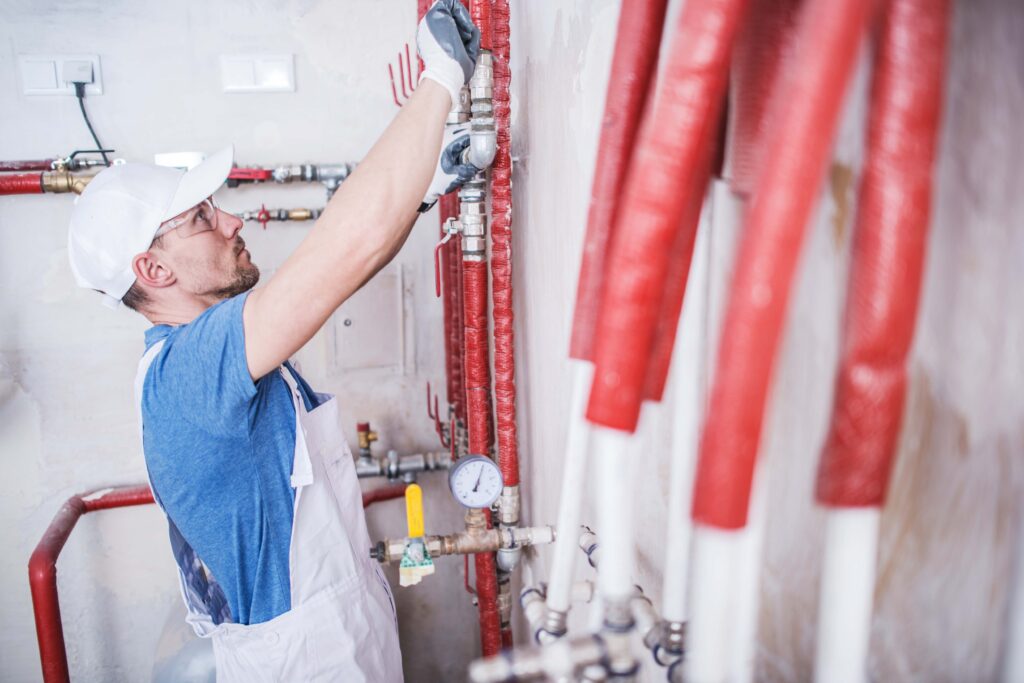
3. Insulating Pipes
When the fall season arrives, so does the potential for freezing temperatures. Frozen pipes are a common plumbing nightmare that can lead to costly repairs and water damage. To prevent this issue, insulating your pipes is a must. Here’s what you need to know about insulating pipes to safeguard your plumbing.
3.1. Identify Vulnerable Pipes:
Begin by identifying the pipes in your home that are most susceptible to freezing. These are typically located in unheated or poorly insulated areas like basements, crawl spaces, and exterior walls.
3.2. Choose the Right Insulation:
There are various types of pipe insulation available, including foam sleeves and fiberglass wraps. Select insulation that suits the size and location of your pipes. Insulation with a higher R-value provides better protection.
3.3. Install Insulation:
Cut the insulation to the appropriate length and wrap it around the pipes. Ensure a snug fit without any gaps. Secure the insulation with tape or zip ties to keep it in place.
3.4. Don’t Forget Outdoor Pipes:
In addition to insulating indoor pipes, don’t overlook outdoor pipes that are exposed to the elements. Use outdoor-rated insulation or heat tape to protect these pipes from freezing.
3.5. Seal Gaps and Cracks:
Insulating pipes will not be as effective if there are gaps or cracks in the walls or floors around them. Seal any openings with caulk or foam insulation to keep cold air out.
Insulating your pipes is a proactive step that can prevent the headache of dealing with frozen pipes and costly plumbing services. Take the time to protect your plumbing system before the colder months set in to ensure a warm and trouble-free fall and winter season.
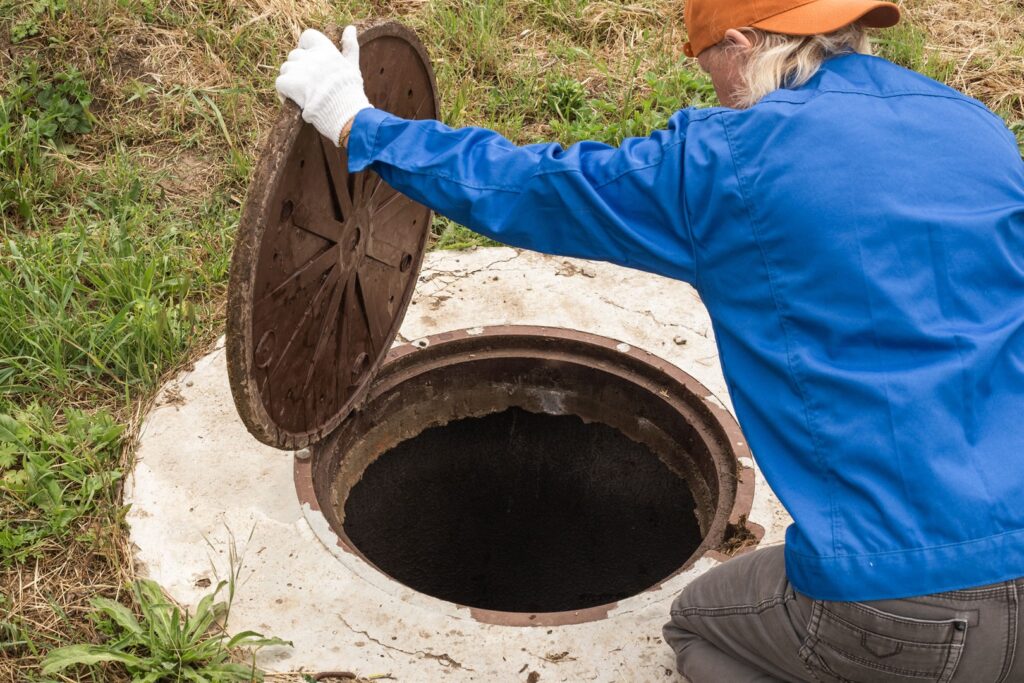
4. Septic System Maintenance
As fall approaches, it is crucial to include septic system maintenance on your checklist to avoid potential plumbing disasters. Neglecting your septic system during this season can lead to costly repairs and inconveniences. Let’s delve into the importance of septic system maintenance and how septic tank services can help.
Fall brings fluctuating temperatures and increased rainfall, which can strain your septic system. Failing to maintain it properly can result in backups, odors, and even system failures. Here’s what you should consider:
4.1. Regular Pumping:
Schedule septic tank pumping before the fall season to remove accumulated solids. This prevents clogs and ensures proper system functionality.
4.2. Inspection:
Professional plumbing services can inspect your septic system for signs of wear and damage. Detecting issues early can save you from expensive repairs.
4.3. Tree Roots:
Fall is when tree roots seek moisture, potentially infiltrating your septic system. Inspections can identify root intrusion and provide solutions.
4.4. Increased Usage:
With guests visiting during the holidays, your septic system may experience heavier usage. Ensure your system is up to the task to avoid overloads.
4.5. Stormwater Diversion:
Ensure stormwater is directed away from the drain field to prevent oversaturation, which can lead to system failure.
To tackle these maintenance tasks effectively, consider hiring professional septic tank services. They have the expertise and equipment to maintain and inspect your septic system thoroughly. Regular servicing not only prevents issues but also prolongs the life of your system.

5. Water Heater Care
As the temperatures drop during the fall season, your water heater becomes even more essential for comfort. Proper water heater care not only ensures hot water availability but also contributes to energy efficiency. Let’s explore the importance of water heater care and how you can maintain it effectively.
Why Fall Water Heater Care Matters:
5.1. Energy Efficiency:
Sediment buildup in your water heater can reduce its efficiency. Flushing the tank in the fall removes sediment, helping your heater operate more efficiently.
5.2. Temperature Consistency:
Cold weather means you will rely on hot water more often. Regular maintenance ensures your water heater delivers consistent temperatures.
5.3. Preventing Leaks:
Inspecting for leaks during fall maintenance can prevent water damage and costly repairs.
5.4. Extending Lifespan:
Proper care can extend the lifespan of your water heater, saving you from premature replacements.
Water Heater Maintenance Steps:
- Flushing: Drain and flush the tank to remove sediment buildup. This should be done annually or as recommended by the manufacturer.
- Temperature Check: Ensure your water heater is set to an appropriate temperature (usually around 120°F or 49°C) to prevent scalding and save energy.
- Inspect for Leaks: Check for any signs of leaks, including corrosion or pooling water around the unit.
- Pressure Relief Valve: Test the pressure relief valve to ensure it is functioning correctly.
- Anode Rod Inspection: If your water heater has an anode rod, check its condition. Replace it if necessary to prevent tank corrosion.
By following these water heater care tips in the fall, you can ensure a reliable supply of hot water throughout the season and beyond. Regular maintenance also helps reduce energy consumption, saving you money in the long run. Consider professional plumbing services if you are unsure about performing these tasks yourself.
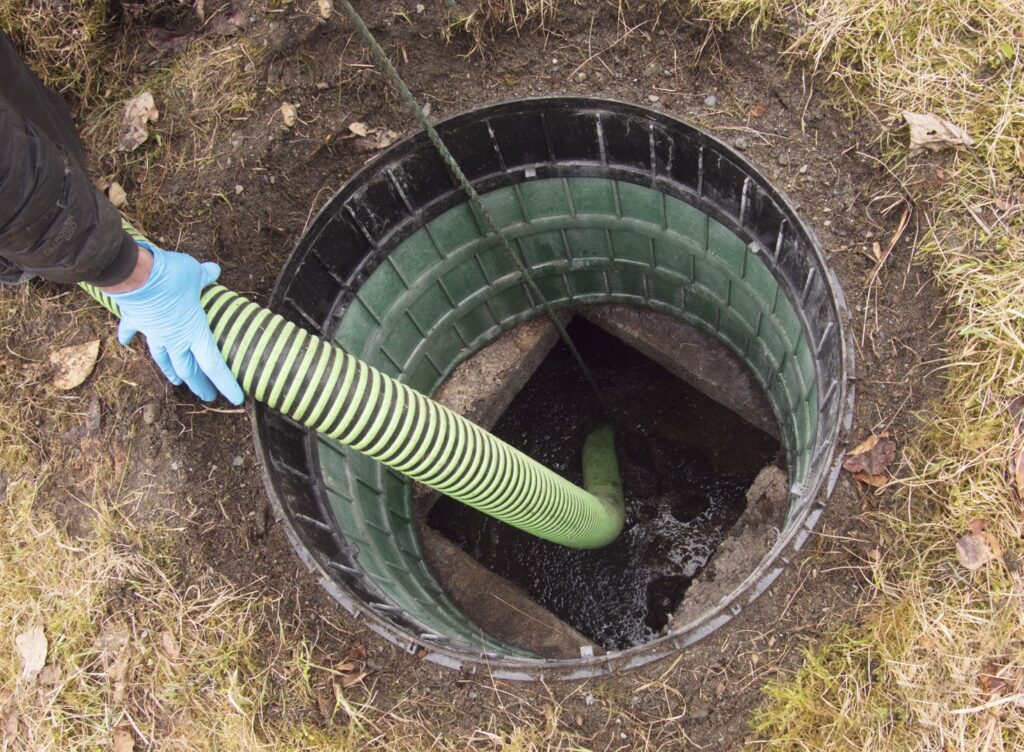
6. Preventing Plumbing Leaks
Plumbing leaks can be a homeowner’s nightmare, causing water damage, high repair costs, and inconvenience. During the fall season, various factors can contribute to plumbing leaks, but there are steps you can take to prevent them and protect your home.
6.1. Inspect for Cracks and Corrosion:
As temperatures drop, pipes are susceptible to contracting and expanding, which can lead to cracks or corrosion. Regularly inspect your pipes for any signs of damage or weakness. If you notice any issues, consider consulting plumbing services for repairs or replacements.
6.2. Maintain Proper Insulation:
In colder regions, inadequate insulation can be a leading cause of pipe leaks. Ensure that pipes located in unheated areas, such as basements, crawl spaces, or attics, are properly insulated. This prevents freezing and potential bursts during cold snaps.
6.3. Fix Leaky Faucets and Joints:
Leaky faucets and loose joints are common culprits of water wastage and damage. Address these issues promptly by tightening loose joints and replacing worn-out washers or seals. Plumbing services can assist with more complex faucet and joint problems.
6.4. Check Appliance Connections:
Your appliances, such as washing machines and dishwashers, have water supply lines that can deteriorate over time. Regularly examine these connections for signs of wear or leaks. Replace any damaged lines to prevent leaks.
6.5. Monitor Water Pressure:
High water pressure can strain your plumbing system, increasing the risk of leaks. Invest in a pressure regulator to maintain an optimal pressure level. Plumbers can assist in installing and adjusting these regulators.
6.6. Avoid Clogs:
Clogs in drains and pipes can lead to leaks as pressure builds up behind the blockage. Prevent clogs by using drain screens, avoiding disposing of grease down the drain, and regularly cleaning your drains. Septic tank services can also help with septic-related clogs.
6.7. Schedule Regular Maintenance:
One of the most effective ways to prevent plumbing leaks is to schedule routine maintenance with plumbing services. Professional plumbers can identify and address potential issues before they escalate into major leaks.
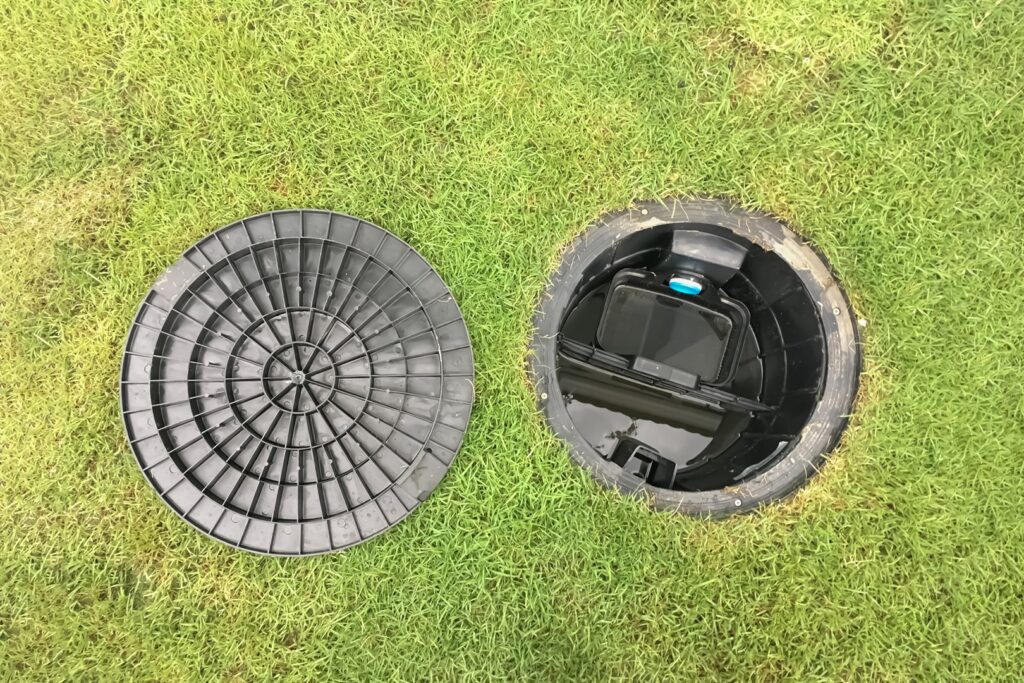
Conclusion
In conclusion, understanding common fall plumbing issues and how to prevent them is essential for homeowners looking to protect their property and finances.
By following these guidelines and being proactive in your fall plumbing maintenance, you can safeguard your home against common plumbing issues and enjoy a worry-free season. Remember, preventative measures not only save you money but also ensure the longevity of your plumbing system.



